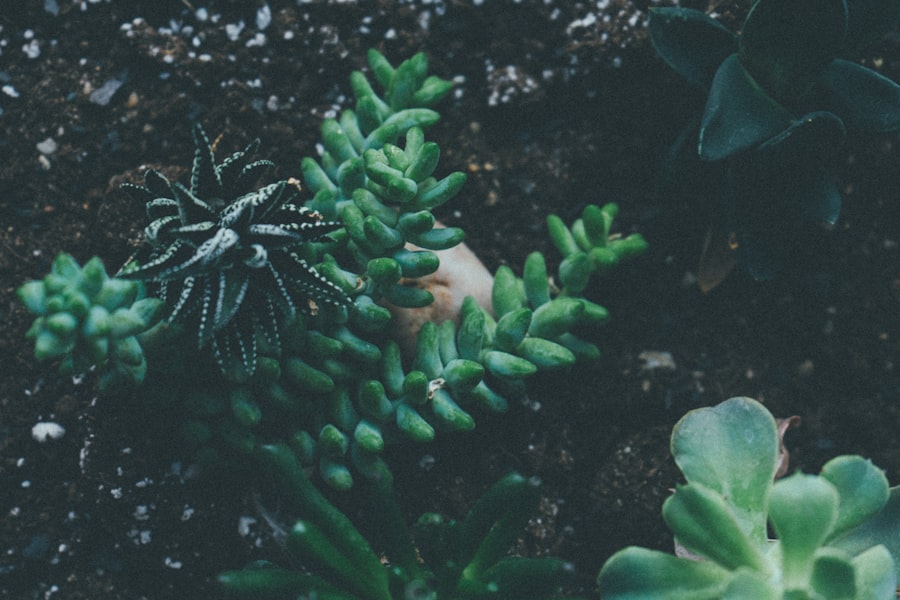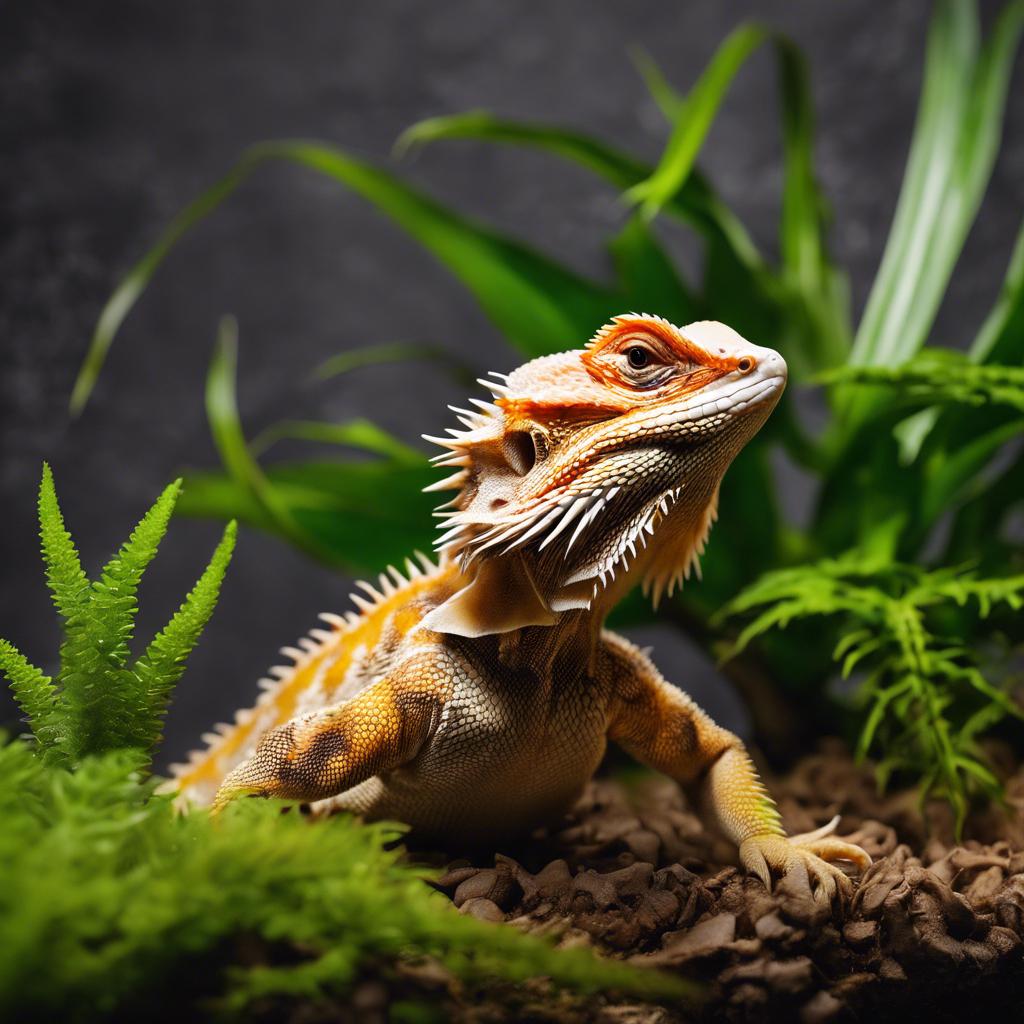Adding plants to a bearded dragon tank can greatly enhance the overall environment and quality of life for your pet. Not only do plants provide aesthetic appeal, but they also offer numerous benefits for your bearded dragon's health and well-being. In this article, we will explore the benefits of having plants in a bearded dragon tank, the types of plants that are suitable for these tanks, how to choose the right plants, and how to properly plant and maintain them. We will also discuss common problems that may arise with bearded dragon plants and how to address them.
Key Takeaways
- Adding plants to a bearded dragon tank can provide numerous benefits, including improved air quality, humidity regulation, and a more natural habitat.
- Some suitable plant options for a bearded dragon tank include spider plants, pothos, and hibiscus.
- When choosing plants for your bearded dragon, it's important to consider factors such as toxicity, size, and maintenance requirements.
- Proper planting and maintenance techniques, such as using a well-draining soil and providing adequate lighting, can help ensure the health of your bearded dragon plants.
- It's important to monitor your bearded dragon's consumption of plants and avoid any toxic options, such as ivy or daffodils, to keep them safe and healthy.
Benefits of Plants in a Bearded Dragon Tank
There are several benefits to having plants in a bearded dragon tank. One of the most important benefits is that plants provide oxygen and improve air quality. Bearded dragons require fresh air to thrive, and having live plants in their tank can help to filter and purify the air, creating a healthier environment for your pet.
In addition to improving air quality, plants also provide hiding spots and climbing opportunities for bearded dragons. These reptiles are natural climbers and enjoy exploring their surroundings. By adding plants to their tank, you are creating a more stimulating and enriching environment for them. The plants can serve as natural perches and hiding spots, allowing your bearded dragon to exhibit its natural behaviors.
Types of Plants Suitable for Bearded Dragon Tank
When choosing plants for your bearded dragon tank, it is important to select ones that are safe for them to consume. Some suitable plant options include spider plants, pothos, hibiscus, and rosemary. These plants are non-toxic and can provide both aesthetic appeal and enrichment for your bearded dragon.
It is crucial to avoid toxic plants that can harm your bearded dragon if ingested. Some common toxic plants include ivy, daffodils, lilies, and aloe vera. Before adding any plants to your bearded dragon tank, it is essential to research and identify any potential toxic plants to ensure the safety of your pet.
Choosing the Right Plants for Your Bearded Dragon
When choosing plants for your bearded dragon tank, there are several factors to consider. Firstly, you need to take into account the size of the tank. Larger tanks can accommodate more plants, while smaller tanks may require more strategic placement of plants to ensure there is enough space for your bearded dragon to move around comfortably.
Secondly, you should consider your bearded dragon's behavior. Some bearded dragons are more active climbers and may benefit from plants that provide ample climbing opportunities, such as pothos or hibiscus. Others may prefer plants that offer more hiding spots, such as spider plants or rosemary.
It is also important to choose plants that are easy to maintain and can thrive in the conditions of a bearded dragon tank. Bearded dragons require specific lighting and temperature requirements, so it is crucial to select plants that can tolerate these conditions.
Planting and Maintaining Bearded Dragon Plants
Properly planting and maintaining plants in a bearded dragon tank is essential for their health and longevity. Firstly, you need to choose a suitable substrate for the plants. Avoid using substrates that can be ingested by your bearded dragon, as this can lead to impaction. A safe option is to use a mixture of organic potting soil and sand.
Next, you need to provide adequate lighting for the plants. Bearded dragons require UVB lighting for their overall health, and this lighting is also crucial for the growth of live plants. Ensure that the lighting is set up properly and that it provides enough light for the plants to thrive.
Regular monitoring of the plants is also important. Check for any signs of damage or disease, such as yellowing leaves or pests. If you notice any issues, take immediate action to address them and prevent further damage to the plants.
Watering and Fertilizing Bearded Dragon Plants

Proper watering and fertilizing of bearded dragon plants are crucial for their growth and health. Bearded dragons require a humid environment, so it is important to provide adequate moisture for the plants. One way to do this is by using a misting system to regularly spray the plants with water. This will help to maintain the humidity levels in the tank and keep the plants hydrated.
When it comes to fertilizing, it is important to avoid over-fertilization. Too much fertilizer can be harmful to your bearded dragon if ingested. Use a slow-release fertilizer or organic options that are safe for reptiles. Follow the instructions on the fertilizer packaging and avoid applying it directly to the plants. Instead, apply it to the substrate around the plants.
Common Problems with Bearded Dragon Plants
Like any living organisms, bearded dragon plants can face common problems such as pests and diseases. Pests like aphids or spider mites can infest the plants and cause damage. If you notice any signs of pests, such as small insects or webbing, take immediate action to address the issue. You can use natural remedies like neem oil or insecticidal soap to control pests.
Diseases can also affect bearded dragon plants, such as fungal infections or root rot. To prevent diseases, ensure that the tank has proper ventilation and avoid overwatering the plants. If you notice any signs of disease, such as wilting leaves or discoloration, take appropriate measures to treat the plants and prevent further spread of the disease.
Bearded Dragon Care: Monitoring Plant Consumption
While plants can provide enrichment for your bearded dragon, it is important to monitor their consumption of plants. Not all plants are suitable for bearded dragons, and some can be toxic if ingested. Keep an eye on your bearded dragon's behavior and appetite. If you notice any changes, such as decreased appetite or unusual behavior, it may be a sign that they have consumed something they shouldn't have.
If you suspect that your bearded dragon has consumed a toxic plant, it is important to seek veterinary care immediately. The vet will be able to assess the situation and provide appropriate treatment if necessary. It is always better to err on the side of caution when it comes to the health and safety of your pet.
Bearded Dragon Care: Avoiding Toxic Plants
Toxic plants should always be avoided in a bearded dragon tank. Some common toxic plants include ivy, daffodils, lilies, and aloe vera. Before adding any plants to your bearded dragon tank, it is crucial to research and identify any potential toxic plants. There are numerous resources available online that provide comprehensive lists of toxic plants for reptiles.
If you are unsure about the safety of a particular plant, it is best to err on the side of caution and avoid adding it to the tank. The health and well-being of your bearded dragon should always be the top priority.
Enhancing Your Bearded Dragon's Habitat with Plants
In conclusion, adding plants to a bearded dragon tank can greatly enhance the overall environment and quality of life for your pet. Plants provide numerous benefits, such as improving air quality, providing hiding spots and climbing opportunities, and creating a more stimulating environment.
When choosing plants for your bearded dragon tank, consider factors such as the size of the tank and your bearded dragon's behavior. Choose plants that are safe for them to consume and can thrive in the conditions of a bearded dragon tank.
Proper planting and maintenance of the plants are crucial for their health and longevity. Ensure that you provide adequate lighting, watering, and fertilizing. Regularly monitor the plants for any signs of damage or disease and take appropriate action to address any issues.
By adding plants to your bearded dragon's habitat, you are not only enhancing their quality of life but also creating a more natural and enriching environment for them to thrive in. Consider adding plants to your bearded dragon tank and enjoy the benefits they bring to your pet's well-being.
If you're a bearded dragon owner looking to create a natural and stimulating environment for your pet, you may be wondering which plants are safe to include in their tank. One popular option is the Pothos plant, but are they really safe for bearded dragons? According to an article on Reptile Wizard's website, titled “Are Pothos Safe for Bearded Dragons?”, you can find all the information you need to know about this topic. The article discusses the benefits of adding Pothos plants to your bearded dragon's tank, as well as any potential risks or precautions to consider. To learn more about this topic, check out the article here.
FAQs
What are bearded dragon plants for tank?
Bearded dragon plants for tank are live plants that are safe and beneficial for bearded dragons to have in their enclosure. These plants can provide a natural and stimulating environment for the bearded dragon.
What are the benefits of having bearded dragon plants in the tank?
Bearded dragon plants can provide a variety of benefits for the bearded dragon, including improving air quality, providing a natural hiding place, and helping to regulate humidity levels in the enclosure.
What are some examples of bearded dragon plants for tank?
Some examples of bearded dragon plants for tank include pothos, spider plants, hibiscus, and bamboo. It is important to research each plant to ensure it is safe for the bearded dragon to consume and does not contain any harmful chemicals.
How do I care for bearded dragon plants in the tank?
Bearded dragon plants require proper care to thrive in the tank. This includes providing adequate lighting, watering, and fertilization. It is important to research the specific care requirements for each plant to ensure it stays healthy in the enclosure.
Can bearded dragons eat the plants in their tank?
Some bearded dragon plants are safe for the bearded dragon to consume, while others are toxic and should be avoided. It is important to research each plant before adding it to the enclosure to ensure it is safe for the bearded dragon to eat.
Where can I purchase bearded dragon plants for tank?
Bearded dragon plants can be purchased at pet stores or online retailers that specialize in reptile supplies. It is important to ensure the plants are safe for bearded dragons and have not been treated with any harmful chemicals before purchasing.

